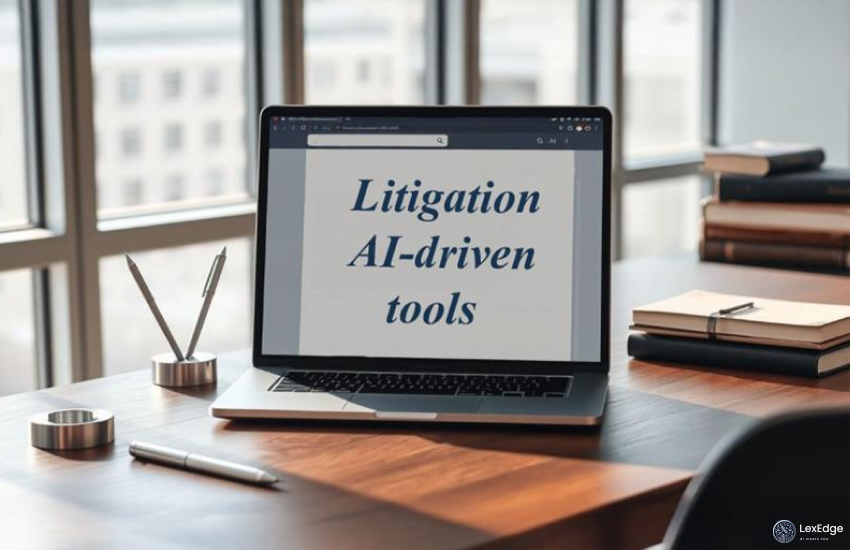Automated Legal Research Platforms: Pros and Cons

Automated legal research platforms are transforming the legal field by offering faster results, lower costs, and smarter analysis. AI tools help law firms of all sizes handle research tasks efficiently, but they also come with risks—like privacy concerns and occasional errors. As the technology evolves, legal professionals must balance its benefits with ethical responsibility and careful oversight.
Introduction The Digital Revolution in Legal Research

Over the last ten years, the legal field has changed a lot thanks to AI-powered research tools. These tools help lawyers, paralegals, and researchers find and understand legal information more quickly and easily. With laws, regulations, and court cases growing all the time, it’s more important than ever to be able to search through large amounts of legal data quickly and accurately. While these new technologies bring big advantages, they also come with some real challenges that law firms must be ready to handle.
Background From Law Libraries to AI-Powered Search

Legal research used to take a lot of time and effort. Lawyers had to spend hours reading through books or doing basic keyword searches in online databases. Now, AI-powered legal research tools have changed that. From early search engines to today’s smart, context-aware platforms, these tools have come a long way. They use technologies like machine learning, natural language processing, and predictive analytics to help review documents, analyze cases, and even assess legal risks—making legal work faster and more efficient.
Core Ideas The Promise of Automated Legal Research

Automated legal research tools provide many useful benefits:
- Faster and More Efficient: AI can quickly read and understand large amounts of legal information in just seconds. This cuts research time from hours to minutes, so lawyers can spend more time on important thinking and planning.
- Lower Costs: By handling repetitive work automatically, these tools reduce costs. This makes legal help more affordable and lets lawyers take on more cases or focus on harder problems.
- Better Accuracy: Many AI tools are now more accurate than people when it comes to tasks like checking citations or reviewing documents. This helps reduce mistakes and keeps research results consistent.
- Smarter Decisions: With help from data and predictions, lawyers can better understand the risks in a case, spot problems early, and build stronger arguments.
Statistics & Data

A recent study from Stanford showed both the good and bad sides of AI legal research tools. While these tools worked better than general chatbots, they still made many mistakes. In fact, one well-known tool gave wrong or made-up answers in more than one out of every three responses.
Real-World Applications and Relatable Examples

- Solo Lawyers & Small Law Firms: Automated research helps small firms keep up with big ones by doing large research tasks without needing a big team.
- Litigation: AI tools can quickly find important past cases, summarize legal decisions, and even help write early drafts of legal arguments, making the court process faster and easier.
- Contract Review: These tools can check contracts for problems, saving time and money during business deals like mergers or acquisitions.
Example: A mid-sized law firm used an AI research tool to go through thousands of documents for a complicated case. What would have taken paralegals weeks was done in just a few hours. This gave the lawyers more time to focus on building a strong case for trial.
Challenges, Limitations, and Critical Viewpoints

Even though automated legal research tools have many benefits, they also have some problems:
- Lack of Deep Understanding: AI can miss the meaning or tone in legal texts and may misunderstand what a case really says.
- Mistakes and Made-Up Information: Some advanced tools can give wrong answers, describe cases incorrectly, or suggest laws that don’t apply.
- Privacy and Ethics Issues: Putting private client data into cloud-based AI systems can raise concerns about keeping that information safe and following legal rules.
- Bias and Too Much Trust: AI can repeat old biases found in past data, and junior lawyers might start relying too much on it instead of thinking for themselves.
- Legal and Ethical Rules: Lawyers must tell clients when they use AI, be honest with the court, and stay aware of what AI can and can’t do.
Emerging Trends and Future Possibilities

The world of automated legal research is changing quickly:
- Getting Better: Companies are working to make AI tools more accurate and better at understanding legal context.
- Working Together: New AI tools will soon connect with other systems lawyers use, like case tracking, billing, and client messaging.
- More Rules Coming: Bar associations and regulators are starting to create rules for using AI properly in legal work.
- Personalized Research: Future AI tools may adjust to each lawyer’s style, preferences, and local laws for more customized help.
Conclusion
Automated legal research tools are changing how the legal industry works. They help save time, cut costs, and provide strong analysis. But there are also real risks, like privacy issues and the chance of serious mistakes. Lawyers should see these tools as helpful assistants not perfect or all knowing and must use them carefully while following ethical rules.

